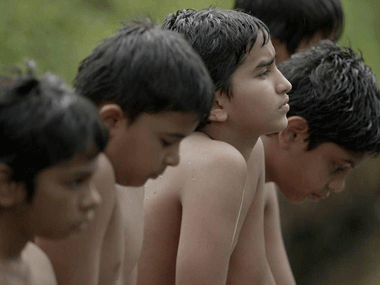The numbers aren’t in yet for the collections made by Gunday’s Bengali version, but judging from the film’s solid box office performance in the rest of the country, the figures will probably be impressive. The Bengali film industry isn't thrilled to see Yash Raj Films step into their territory and there have been unconfirmed reports that in Assam, YRF muscled an Assamese film, Raag, out of the theatres to secure cinemas for Gunday. While some say that Raag’s performance was too poor to merit running for a second week (the film released all over Assam on 7th February), there’s clearly a great deal of anxiety that Bollywood isn’t much of a team player. Marathi cinema would probably agree with this contention. The Marathi film industry suffered from Bollywood’s success in precisely the way that Bengali producers fear Bengali-dubbed Bollywood films will impact Tollywood. Made with amounts that would probably just about cover the catering budget of a blockbuster Bollywood title, Marathi cinema was a modest business that catered to local audiences. However, with Bollywood capturing audiences, the money and opportunities for Marathi cinema shrank significantly in the past two decades as popular Hindi cinema producers and distributors muscled their way into Maharashtra. [caption id=“attachment_1394543” align=“alignleft” width=“380”]  A screengrab from the film, Killa. Courtesy: Facebook[/caption] However, if anyone thought that Marathi cinema would be wiped out by Bollywood’s aggression, there’s good news. In the past few years, we’ve seen some excellent films emerging out of Maharashtra. It’s helped that there’s now a clutch of Marathi channels that will buy and telecast regional cinema (the telecast rights and advertising revenue make the films more financially viable than they were before the cable tv revolution). Whether seen in theatres, on tv or at film festivals, over the past few years, a number of Marathi films have appealed to audiences that are interested in story rather than spectacle. Deool (2004), Tingya (2008), Gabhricha Paus (2009), Natrang (2010), Balak Palak (2013) and Anumati (2013) all received critical acclaim and some of these even managed to make some money at the box office. Sanjay Jadhav’s Duniyadari (2013) released at the same time as Chennai Express and beat the Shah Rukh Khan vehicle in every centre where the two films competed, as per reports. Following the route that all intelligent Indian cinema hopes to take, Marathi cinema has also made its presence felt in the film festival circuit. Last year, Nagraj Manjule’s debut film _Fandry_ was selected for the Abu Dhabi Film Festival as well as the London Film Festival. It won the Grand Jury Prize at the Mumbai International Film Festival and is currently running in PVR theatres. The latest Marathi winner is Killa, directed by debutant director Avinash Arun who also shot the film. Killa won the award for the Best Film awarded by the Children’s Jury. It is the third Marathi film to be selected in Berlinale and the first Indian feature film to win this award. Killa is about a young boy named Chinu who is forced to move after his father dies. He struggles to adjust to his new surroundings, but slowly makes friends and gains confidence. The jury said in its citation, “This film convinced us in all respects: with his [Arun’s] good camera work and the great actors, but also because of its incredibly beautiful nature images, which blend perfectly with the music. This film made us all want to discover India.” Killa is expected to have a theatrical release in India this May. One of the major obstacles for films like Killa and Fandry is that it’s difficult for them to fight for screening slots with the big Bollywood players. The best timings are secured by commercial films and the competition can be fierce. Maybe their paths would be comparatively smoother if films like Killa and Fandry got the kind of Bollywood backing Ship of Theseus and The Lunchbox did. Better yet, perhaps someone could develop an Indian Netflix for independent cinema? Because both the films and their audiences are out there, waiting to be connected.
One of the major obstacles for films like Killa and Fandry is that it’s difficult for them to fight for screening slots with the big Bollywood players.
Advertisement
End of Article


)
)
)
)
)
)
)
)
)



